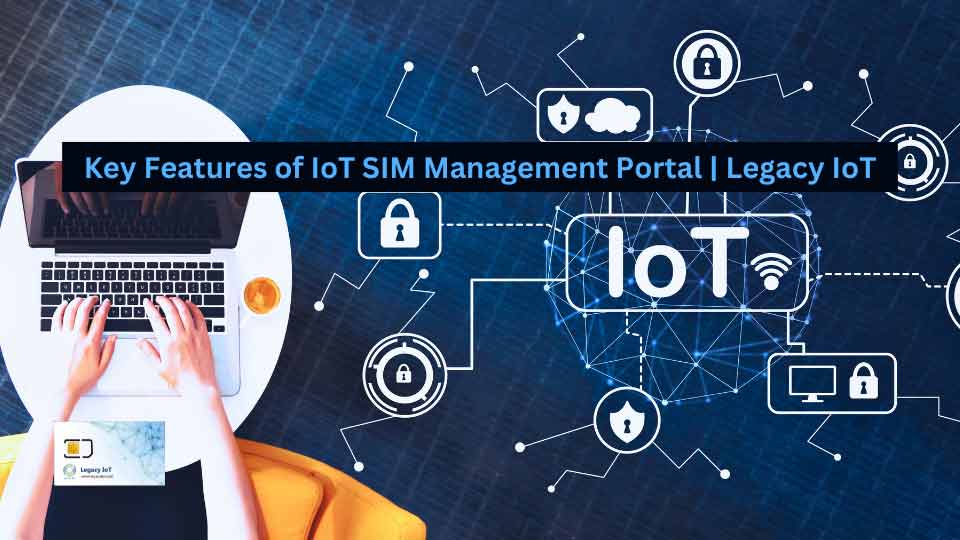In the rapidly evolving landscape of the Internet of Things (IoT), managing SIM cards efficiently and effectively has become paramount. With the proliferation of connected devices across various industries, from smart cities to healthcare and manufacturing, the need for centralized management solutions has never been more critical.

This is where IoT SIM management portals come into play, offering a comprehensive suite of features to streamline SIM card administration, optimize connectivity, and enhance operational efficiency.
In this blog post, we’ll delve into the key features of IoT SIM management portals and explore how they are shaping the future of IoT deployment and help in Business Growth.
Introduction to IoT SIM Management Portals
Before delving into the specific features, let’s first understand what IoT SIM management portals are and why they are essential in the IoT ecosystem.
IoT SIM management portals are web-based platforms designed to facilitate the management of SIM cards deployed in IoT devices. These portals provide a centralized interface through which users can monitor, configure, and control their SIM cards remotely.
By leveraging advanced functionalities, IoT SIM management portals empower organizations to efficiently manage large-scale deployments of connected devices, optimize data usage, and ensure seamless connectivity across diverse networks.
Want to study more about IoT SIM Management Portal?
Key Features of IoT SIM Management Portals
Remote SIM Provisioning: One of the fundamental features of IoT SIM management portals is the ability to remotely provision SIM cards over-the-air (OTA). This eliminates the need for manual intervention, allowing for quick and hassle-free activation of SIM cards. Remote provisioning enables organizations to deploy IoT devices rapidly and scale their deployments without logistical constraints.
Real-time Monitoring and Alerts: IoT SIM management portal offer real-time monitoring capabilities, providing insights into the status and performance of deployed M2m SIM card. Users can track data usage, network connectivity, and device health metrics in real-time. Moreover, these portals can generate automated alerts and notifications, allowing users to proactively address issues such as network outages or abnormal data consumption.
Network Connectivity Management: Managing connectivity across diverse networks is a complex task in IoT deployments. IoT SIM management portals simplify this process by offering seamless network connectivity management. Users can configure network preferences, prioritize networks based on performance and availability, and enable automatic network switching to ensure uninterrupted connectivity.
Data Usage Optimization: Efficient utilization of data is crucial in IoT deployments to minimize costs and maximize resource utilization. IoT SIM management portals provide tools for monitoring and optimizing data usage. Users can set data usage thresholds, implement usage policies, and allocate data quotas to individual devices or groups. Additionally, these portals offer detailed analytics and reporting capabilities to identify trends, analyze usage patterns, and optimize data consumption.
Want to study more about Secrets of IoT Deployment Cost Analysis?
Security and Authentication: Security is a paramount concern in IoT deployments, especially when dealing with sensitive data and mission-critical applications. IoT SIM management portals incorporate robust security features to safeguard SIM cards and connected devices against potential threats. This includes authentication mechanisms, encryption protocols, and access control policies to ensure secure communication and data integrity.
Lifecycle Management: From activation to deactivation, IoT SIM management portals streamline the entire lifecycle of SIM cards. Users can easily activate, deactivate, suspend, or reactivate SIM cards as needed, eliminating manual paperwork and administrative overhead. Additionally, these portals facilitate inventory management, tracking SIM card assignments, and maintaining accurate records of device deployments.
API Integration and Customization: To cater to diverse use cases and integration requirements, IoT SIM management portals offer APIs (Application Programming Interfaces) for seamless integration with existing systems and third-party applications. This enables organizations to extend the functionality of the portal, automate workflows, and integrate with other IoT platforms or enterprise systems. Furthermore, Legacy IoT sim management portals often support customization options, allowing users to tailor the interface and functionality according to their specific requirements.
Scalability and Flexibility: Whether managing a handful of devices or thousands of deployments, IoT SIM management portals are designed to scale according to the needs of the organization. They offer flexible licensing models and deployment options, including cloud-based and on-premises deployments, to accommodate varying scalability requirements. Additionally, these portals are built to adapt to evolving technology standards and support new IoT protocols and connectivity options.
Conclusion
In conclusion, IoT SIM management portals play a pivotal role in simplifying the complexity of managing SIM cards in IoT deployments. By offering a comprehensive suite of features, including remote provisioning, real-time monitoring, network connectivity management, data usage optimization, security, lifecycle management, API integration, and scalability, these portals empower organizations to streamline operations, reduce costs, and drive innovation in their IoT initiatives.
As the IoT ecosystem continues to evolve, the role of IoT SIM management portals will become even more pronounced, serving as a cornerstone for managing connected devices efficiently and unlocking the full potential of IoT technology.





